Making a rosary in the country
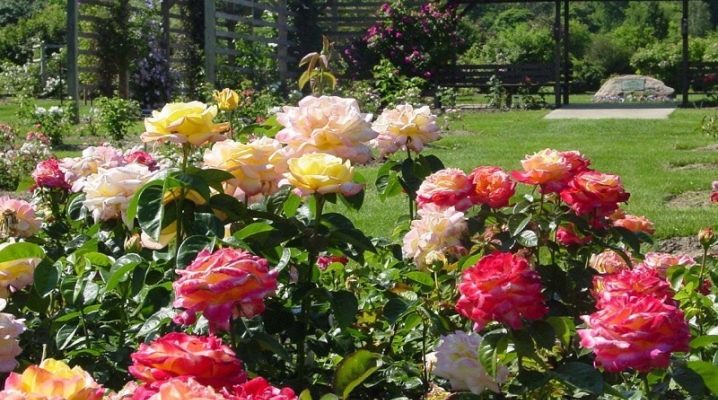
Creating a rose garden on your own backyard is a tricky business, especially for beginners. And yet, knowing the basics of agricultural technology and the principles of landscape design, anything is possible. Let's consider the main points and principles of decorating a rosary in the country.
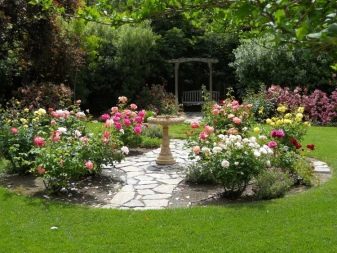
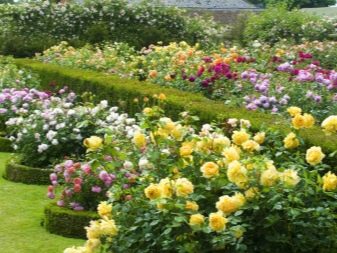
Seat selection
When choosing a place for arranging a rose garden in the country, you must take into account some of the nuances. You cannot break a beautiful flower bed with expensive planting material somewhere in the distance. It is necessary to plan an open space in the central part. This can be a place in front of the house, a recreation area where you can admire flowers, a front garden, an area along the fence, a flower garden in the front yard area.
Do not forget about what the colors themselves require. This is a sunny, draft-free place. It is not recommended to plant a flower crop under tall trees, in the western or northern part of the house.... Only David Austin's roses are considered shade-tolerant.

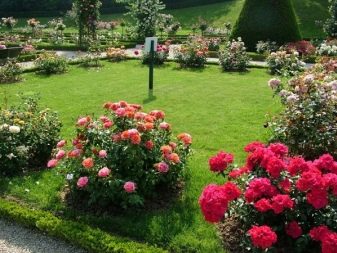
Experts advise to prepare a flower garden with loose fertile soil. None of the varieties of roses will grow on the stones. If the suburban area has a meager fertile layer, then the land should be updated.
Roses go well with flower crops such as salvia, begonia, delphinium, pansies. Irises, periwinkles, primroses, carnations are suitable for her. A good combination is obtained in the presence of clematis, host, geyher. When grown in rock gardens, a favorable neighborhood is obtained with bindweed, ferns, conifers. A useful neighborhood can be traced with sage, lavender, marigolds. It is they who save the rose from the invasion of harmful insects.

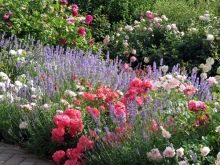
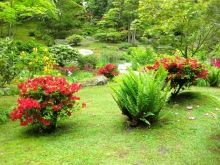
Species overview
When breaking the rose garden, it should be remembered that rectilinear forms are applicable. For the best view of the flower garden, two schemes work: a checkerboard planting or planting in such a way that tall varieties grow in the center, and undersized representatives grow along the edge. An important point when creating a rose garden is its color. For example, cream colors work well with lavender shades.
An excellent combination is obtained when planting white roses with green conifers. Thuja serve as the background, and a creeping juniper is located in the foreground, being a step towards planting roses in a flower bed.
Recently, a mixborder has become popular, where several varieties have been planted: creeping, scrub, climbing. They are arranged in ascending order, diluting with decorative greenery and perennials.
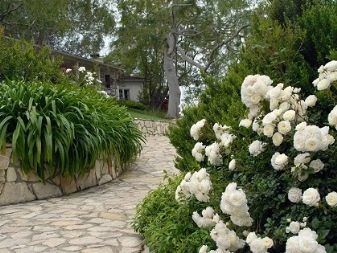
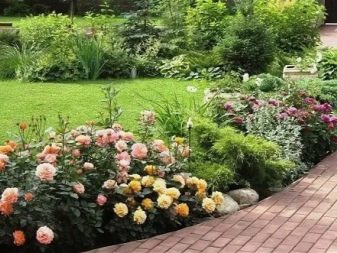
There are a lot of rosaries today.
- The front flower bed is a plantation of bright colors. Mostly tall varieties are used for the design of central flower beds, building facades, statues, fountains.

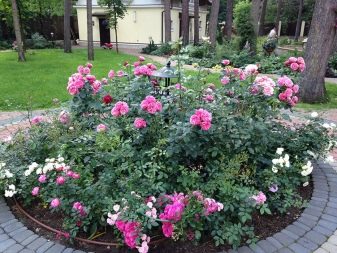
- Romantic rose garden represented by landings of pastel colors. They can be diluted with ivy loaches. The romantic style is suitable for decorating verandas and gazebos.
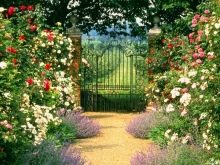
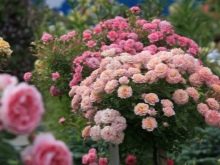

- One-sided flower garden can be smashed against a fence, wall or in a small area. Ground cover varieties can flaunt in the foreground, and climbing ones along the edges. The farthest background is decorated with park species.
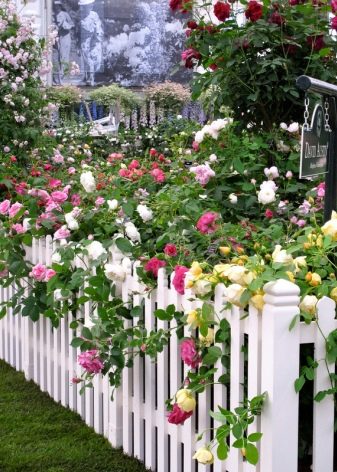
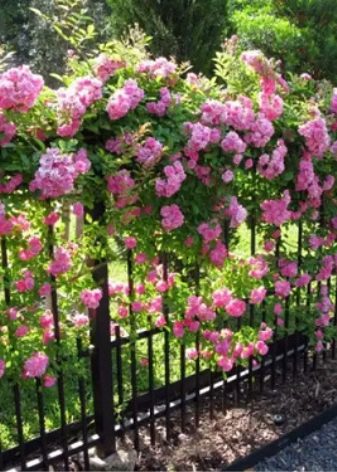
- Vertical plantings consist of climbing roses. Best of all, such plantings are combined with round gazebos, arches, and other structures of a similar configuration. Often, supports, garters are used to give a certain shape.
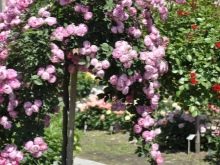
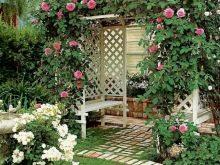
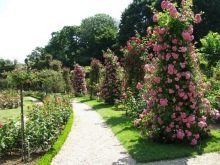
- A flower garden that is visible from all sides looks perfect in any part of the site. Roses are planted from the central part to the edges. The middle is filled with tall varieties, followed by crops lower in height. The completion of the composition falls on undersized varieties.
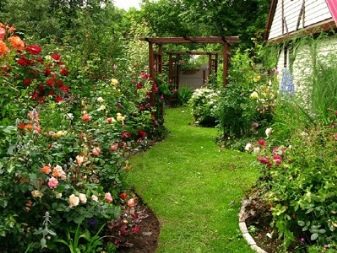
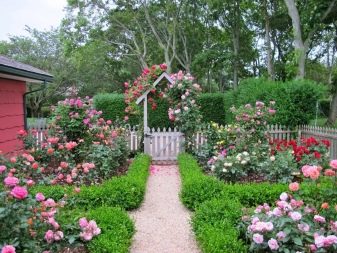
- For rock garden pick up ground cover roses, which quickly fill the entire area of the flower bed, spreading like a carpet.
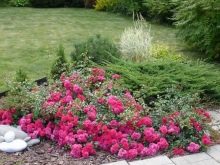


- A mobile flower garden is created from undersized rose bushes. They are distributed in small flowerpots, tubs, containers, which can be conveniently placed along the path, path or at the entrance to the building.
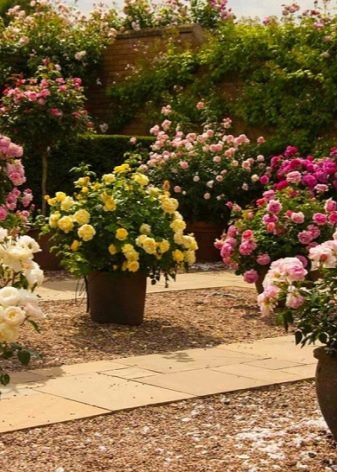
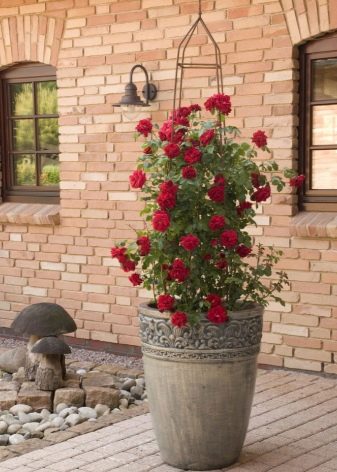
According to the stylistic direction, two types can be distinguished.
- Landscape variety, which is characterized by sloppy natural plantings. For this flower garden, any varieties of cultivated plants will fit, because they are planted in no particular order. Such rose gardens are beautifully combined with water bodies.
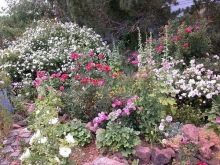
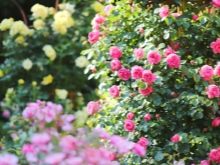

- Regular flower beds with the correct geometry... They have strict borders made of granite chips, pebbles, bricks, marble, decorative stone. Roses are chosen in a single color style in the form of circles or certain rows. For them, a place is determined at the entrance to the house, in the central part of the lawn or along the paths.
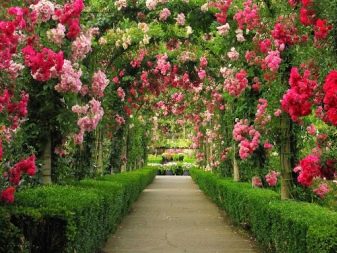
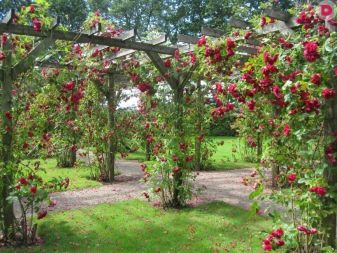
The combination of roses by color
When decorating a beautiful rose garden, you need to decide on the color scheme. For example, a flower garden, which is admired from a distance, is better designed in the style of a play of contrasts, and a flowerbed, broken in front, is kept in one color.
Do not forget about the basic rules for combining colors. The compositional construction should not contain more than three shades.
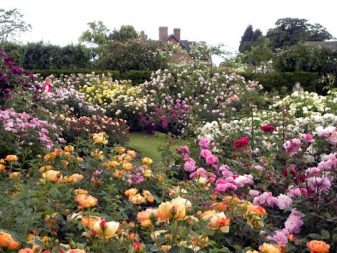
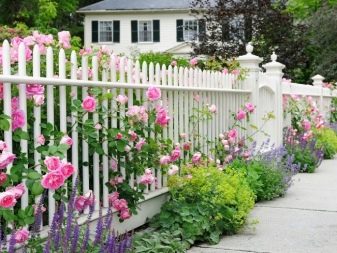
The color combination can be monochrome or contrasting.
- If using monochrome, then the composition is built as follows: varieties are planted that are similar in color, but different in shade. When planted in this way, the smoothest color transition is obtained. For example, pink is combined with white, you can also add a creamy tone. Plants of different colors must be placed on different sides of the site. Brighter colors should be present in the background. In this composition, the cultivation of other perennials is allowed: lavender, delphinium, hydrangea.
It is possible to combine not only the color scheme, but also the varietal variety. For example, Austin roses go well with each other in shades and varieties.
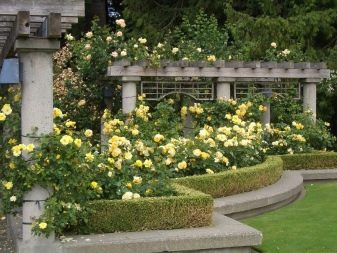
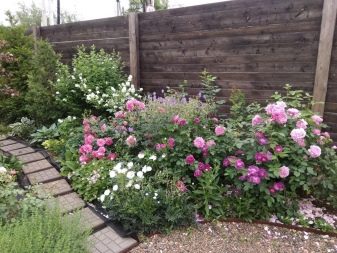
- When creating a contrasting style, plants are selected according to the principle of contrast, combining them into one group. For example, oranges contrast with whites, and purple or violet with yellow. At the same time, blue flowers can be added to the composition. With the help of a contrasting flower bed, you can focus on a specific area of your site.

Drawing up a diagram
To compose your ideas and translate them into reality, you need to draw up a flower garden diagram on a sheet of paper. To do this, it is recommended to think over the list of varieties that you plan to plant. It is also recommended to plan their planting. It is necessary to think over the places of planting of undersized and tall varieties, their correct color combination.
The plan should indicate the size of the rose garden, its arrangement: the presence of lighting, decorative structures, paths. Think about whether to add stones, shrubs, perennials here.
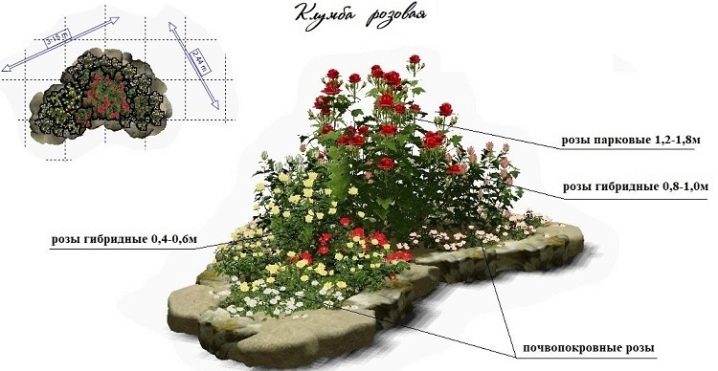
DIY steps
In order for roses to decorate the summer cottage, to grow in their place and not have to be constantly replanted, it is necessary to carefully organize all stages of agricultural technology. Step-by-step instructions for beginners save time and money. In addition, at the initial stage, it is easier to solve some problems.
- The rose garden should be set up on an area that is as open as possible to sunlight. As a rule, these are places in the recreation area, at the front entrance, in the garden. If you create a flower garden with expensive varieties in the distance, households and guests will not see all the beauty.
- The lack of light will have a detrimental effect on flowers: growth will slow down, there will be no flowering or it will be inactive, and a pest infestation will begin on the queen of flowers... Even the correct organization of the flower bed involves the prohibition of the neighborhood with tall shrubs and trees.
It is recommended to arrange a flower bed on the south side of the garden. It is best to do it in the direction where sunlight hits for 4 hours before and after lunch.
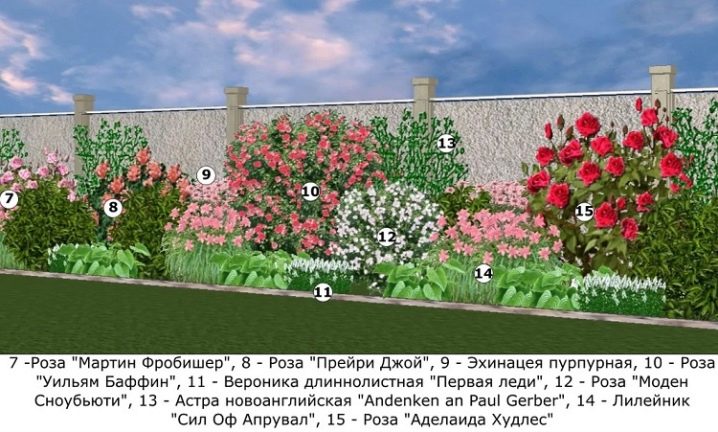
Soil preparation
It is better to prepare the soil mixture a couple of months before planting. It is recommended to do a thorough digging of the earth. If possible, it is worth combining digging with transshipment. For these purposes, it is recommended to dig a ditch two bayonets deep. After that, the top layer is placed at the very bottom, and part of the lowland land is placed at the top. Together with such laborious work, fertilizers are applied at the same time.
Many flower growers do not practice soil transshipment, but immediately plant the plants in ready-made holes. But this method is ineffective in terms of the survival rate of the bushes, their enrichment with nutrients. If the water table is high, it is best to drain it to keep the roots from rotting. Acidic soils are limy. At the same time, they improve the quality of the land.
Experts advise to dilute the sandy soil with clay and vice versa.

Selection of seedlings
When buying, pay attention to a healthy appearance. On the bushes and green mass there should be no powdery bloom, black blotches, the surface of the stem should be smooth and not wrinkled.
It is recommended to purchase specimens with an open root system on the day of planting. However, following the advice of seasoned gardeners, it is best to purchase closed-root flowers in prepared containers. Then there will be no need to urgently land.

If we talk about specific varieties, then preference should be given to the following types:
- refurbishment: Hugh Dixon, Georg Dixon;
- park: "Grothendorst", "Ritausma";
- tea-hybrid: "Limbo", "Athena", "Sonia";
- floribunda roses: "Iceberg", "Diadem", "Nicole";
- polyanthus: "Orange Triumph", "Cameo";
- miniature: "Mandarin", "Hummingbird", "Baby Masquerade";
- climbing: "Dorothy Perkins", "Flamenz";
- ground covers: "Fairy", "Ondela", "Basi";
- shrub: "Charlotte", "Rococo", "Bear".



Disembarkation
When planting, you need to control the distance between seedlings. It should be at least 40 centimeters. Planting depth with fertilizer - up to 15 centimeters... However, when planning holes, it is best to focus on what variety will grow in them. For example, miniature roses can be left 30 centimeters between the holes, for tea varieties - up to 100 centimeters, curling leaves up to three meters.
Bushes with a protected root system must be removed from a container with moist soil, moved to the finished hole, sprinkling with soil. And for the quick survival of plants with an open root system, it is recommended to slightly thin out the roots. During planting, you need to cover the bush with a slide, tamp it, forming a kind of mound. After planting, the bush is thoroughly watered with warm water.



After planting, standard plant care is carried out: watering, weeding, fertilizing, loosening, pest control. Watering should be done in moderation, avoiding excessive waterlogging. Do not forget about mulching and plucking already faded buds.
Excess shoots that grow actively during the season are cut off. And curly representatives need support structures. Before wintering, the bushes are carefully covered. With the onset of spring, the shelter is removed, then all excess shoots are removed and cut off.
Insecticide prophylaxis and fertilization take place in the spring.



Beautiful examples
- A cascade of climbing roses can decorate any hedge... In this case, the pink bushes emphasized the country or country style.
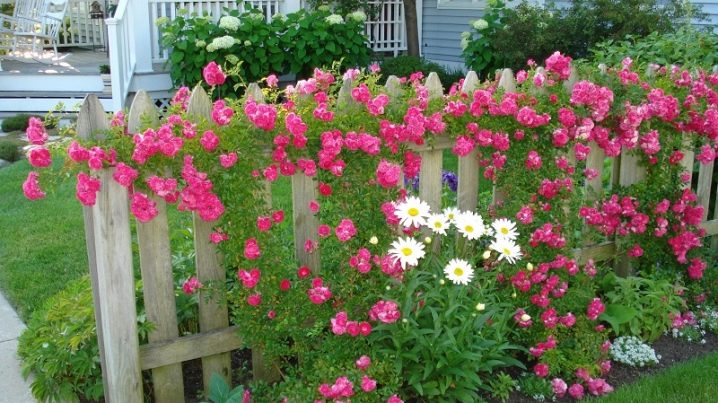
- The flower bed, laid out along the garden path, gives a sense of austerity, style and simplicity at the same time. The line of roses goes well with the lawn in the background. This is a striking example of monochrome when creating a flower garden.
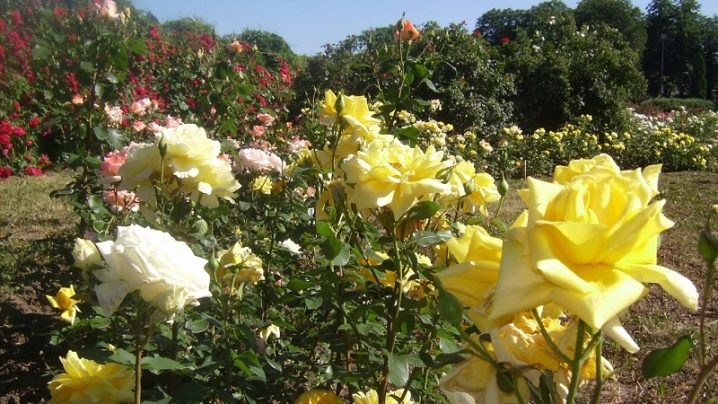
- The contrast of the color composition is clearly manifested here. With proper care, it will be impossible to take your eyes off the rose garden during the entire warm period.
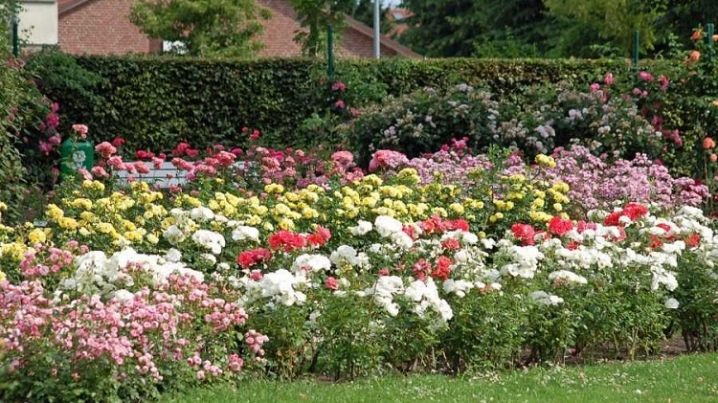
- It is impossible to pass by such beauty, arranged in the central part of the courtyard.... The accent is enhanced by means of an elegant hedge.

- Rose garden in the recreation area. It is here that households spend their time. You can spend time admiring the beauty and severity of the lines throughout the summer.
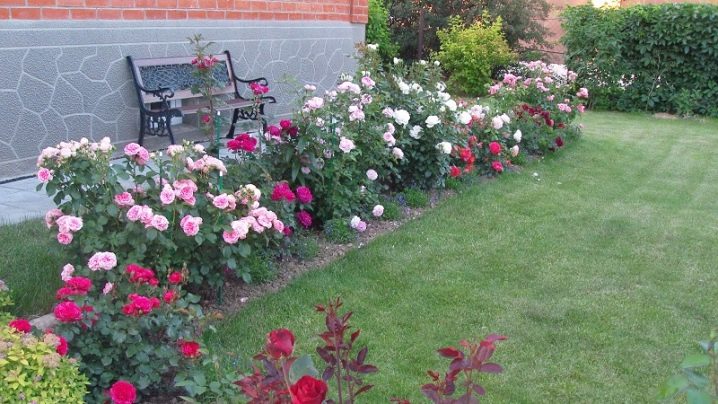

































































































The comment was sent successfully.